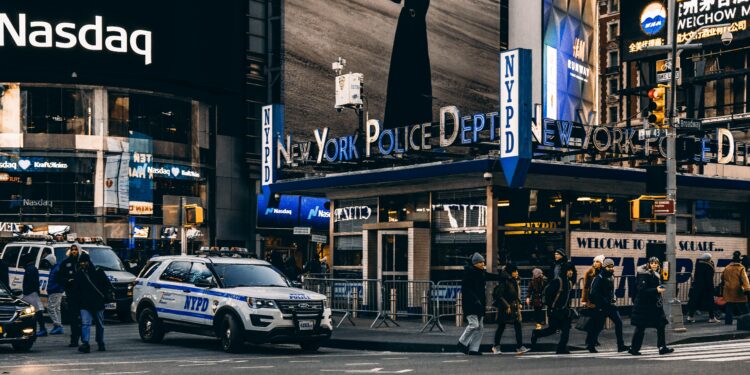Why Funding for The Police Department Should Be Used Elsewhere

Cries for Change
The spread of COVID-19 at the start of 2020 was a tragedy that no one could foresee but it, unfortunately, was not the only tragedy to occur. The death of George Floyd, a 46-year-old black man, under police custody and at the hands of the police officers sparked outrage across the country, leading to a wave of protests against police brutality. As reports of police brutality spread, a new wave of protests arose in activists, leading to the resurgence of Black Lives Matter and more recently—Defund the Police, a movement aimed at defunding the police department and reducing the role of policing in communities. Many individuals, especially those from communities of color, believe that history and current events have shown that policing fails to keep communities safe and in fact, presents a greater threat to the communities they are meant to protect. Others oppose this movement, arguing that without policing, there is no one to maintain public safety. Despite people’s belief that policing is necessary, funding can go towards other social services because these services serve underrepresented communities better than the actual police force.
Policing is Counterproductive to Public Safety
The role of the police is to protect and serve their communities, but more often than not, the police harm the very community they are mean to protect, especially minority communities. In fact, data shows that people of color are disproportionately targeted by the law, facing higher rates of arrests, imprisonment, and police brutality. People of color are more likely to be accused of crimes, denied their legal rights, and face lethal force under police custody than their white counterparts. Unfortunately, police brutality against minorities is nothing new in America. The truth is that the police were originally an institution meant to protect and serve white communities, by conducting slave patrols, night watches, enforcing Jim Crow Laws, and that racial bias still holds true today. The police have always been used as a tool to enforce white supremacy and subjugate minority communities. In fact, most police officers in the U.S. are white, making up a white majority of the police force and demonstrating that they are more likely to hold internalized racism towards people of color or other minorities. Police brutality is a symptom of a larger problem in America—institutional racism, and the discrimination that occurs from police shows that they cannot be trusted with the safety of the public, not when the public is made up of the people that they target.
Police Are Rarely Held Accountable
In the trial of Derek Chauvin, one of the officers responsible for the death of George Floyd, Chauvin was found guilty on charges of murder and manslaughter for Floyd’s death. People across the nation celebrated the verdict as people poured out into the streets to express their joy. But this outcome where an officer is convicted is a rarity in the justice system since police officers almost never face the consequences for their actions, never prosecuted, convicted, or even charged in some cases. In fact, the system goes out of its way to cover up and justify their actions to protect officers’ misconduct even when their actions lead to casualties. Officers accused of police brutality and other misconduct are rarely prosecuted and even more rarely convicted of charges brought against them. In cases where officers are convicted, they are typically convicted on lesser charges with the lowest sentencing possible. The system works to protect the officers accused as the police protect each other, distrusting the investigation process, and there is a conflict of interest. The police close ranks and refuse to ‘snitch’ on each other if it puts their colleague in jeopardy. Previously, in the case of Warren vs. the District of Colombia, it was ruled that there isn’t actually any obligation for the police to protect any specific individual, only how best to protect the public at large as that is their ‘public duty’. But this is just a social norm used by the system to shield the police from claims of negligence. There is also a social norm where the public often puts the police on a higher pedestal because of their roles as ‘protectors’ who serve their community, which means the public excuses their offensive behavior. In cases where suspects kill officers, those suspects become known as ‘cop killers’ and become social pariahs within the community. Both social and legal factors protect the police from taking accountability for their actions, allowing them influence over the community.
The Beginning of a Movement
As news of police brutality and injustice spread in media, activists began advocating the movement, Defund the Police, as a way to both prevent police brutality and support alternative services that would maintain public safety. The movement began within the Black Lives Matter movement during the George Floyd protests, calling for the disinvestment of all police departments and allocating those resources towards the community instead. Some people have the misconception that the movement means the abolishment of the police entirely when in reality it is calling for the end of excessive policing in communities. The main goal of Defund the Police is to stop giving resources to a division that has actively harmed the community and instead try to hold the department accountable through fiscal responsibility. The funds originally meant for the police would instead go towards services that would benefit and enrich the community, thereby preventing the underlying issues—poverty, abuse, drugs—that would lead to crimes threatening public safety. The belief is that by addressing these underlying issues that often lead people to commit crimes, these services prevent the problem from occurring in the first place.
A Better Alternative to Policing
In New York, Mayor Bill De Blasio has failed to deliver on his promise to decrease the budget for the police by $1 billion and instead decreased it by half of the promised decrease. U.S. cities alone spend about over $100 billion on policing a year and that number is only increasing with more cities boosting the funding allocated for police departments. In contrast to this, vital social services and programs for this, such as healthcare, education, housing, etc., are underfunded and unfulfilled, especially in underrepresented communities. In New York, more money is spent on policing than on the departments for health, homeless, and community development. The Mayor claims that the increase in budget is merely to address rising crime rates and that he and the council have addressed the demands of police reform activists. In truth though, what keeps crime rates low is not the increase in policing but rather programs that offer jobs, education, and community services that control crime. Social services address the root cause of crime where people vulnerable to things like mental illness, poverty, and drugs, feel a life of crime is the only viable way to get the things that they need. Communities where crimes rates and violence are high also have higher rates of poverty, unemployment, and discrimination. These communities are generally minority or low-income communities where opportunities for resources are sparse. By investing in social services and programs targeted at these issues, the causes for crimes are deterred and public safety is created. When people feel supported, secure, and stable, they have no reason to engage in crime and that is what these social services do.
Not only that but investing in social services would expand the emergency services available so that the police are not necessary for calls that aren’t urgent emergencies. People can choose to call for other services like a health care professional instead of the police in cases of medical emergencies or social workers in cases of abuse or neglect rather than the police. Essentially, the middleman—the police—would get cut out so that people can receive the actual services they need, and the police are free to respond to emergencies that actually require their intervention. It means that people who might need medical aid or be facing a traumatic event are met with professionals better equipped to help them through their situation. It ensures that no one’s time is wasted and that taxpayer dollars are put to better use than having the police respond to a situation they weren’t necessary at.
The Fears for Defunding the Police
However, some people argue that police are necessary to maintain public order and safety and that defunding the police will make communities more vulnerable to crime. The belief that policing is necessary for public safety is ingrained in the public conscious and thus, makes some people worried about what would happen once the department is defunded. People depend on police for so many issues from domestic disputes, violence, abuse, accidents, etc., and the fear of what would occur from removing the barrier the police represent is real and valid. Some can’t reimagine public safety without the police and see the Defund the Police movement as abolishing policing as a whole. People are especially fearful to defund the police in a time when violent crime rates are on the rise, believing they need the police now more than ever. In New York alone, the number of violent crimes like hate crimes, shootings, and assault are greater than the previous years and show no signs of stopping.
But in reality, defunding the police does not mean getting rid of the police altogether; it means looking for a more efficient way to address crime rates. By investing in social services and underfunded services, crimes are prevented from the source because these services address the root cause of the problem and the crime is the symptom. This is a preventative tactic that ensures crimes don’t occur in the first place whereas policing is a reactive tactic to crimes. Policing still has a role in society but the police are freed up to respond to real emergencies because these social services are taking care of other situations that might not necessarily require a police response. And in truth, the police are often ineffective in meeting the needs of the public, especially minority communities vulnerable to crime. The resources devoted to policing are better spent towards these social services. Despite people’s belief that police are necessary to public safety and that defunding them will put the public at risk, those funds can instead be allocated towards social services to prevent crime in the first place.

